Why you can trust Tom's Hardware
With a suggested price that's nearly the same as the RTX 4080, and with street prices currently hovering above the 4080 cards, 4K performance should be a major consideration for anyone looking at the 7900 XTX cards. We'll start there.
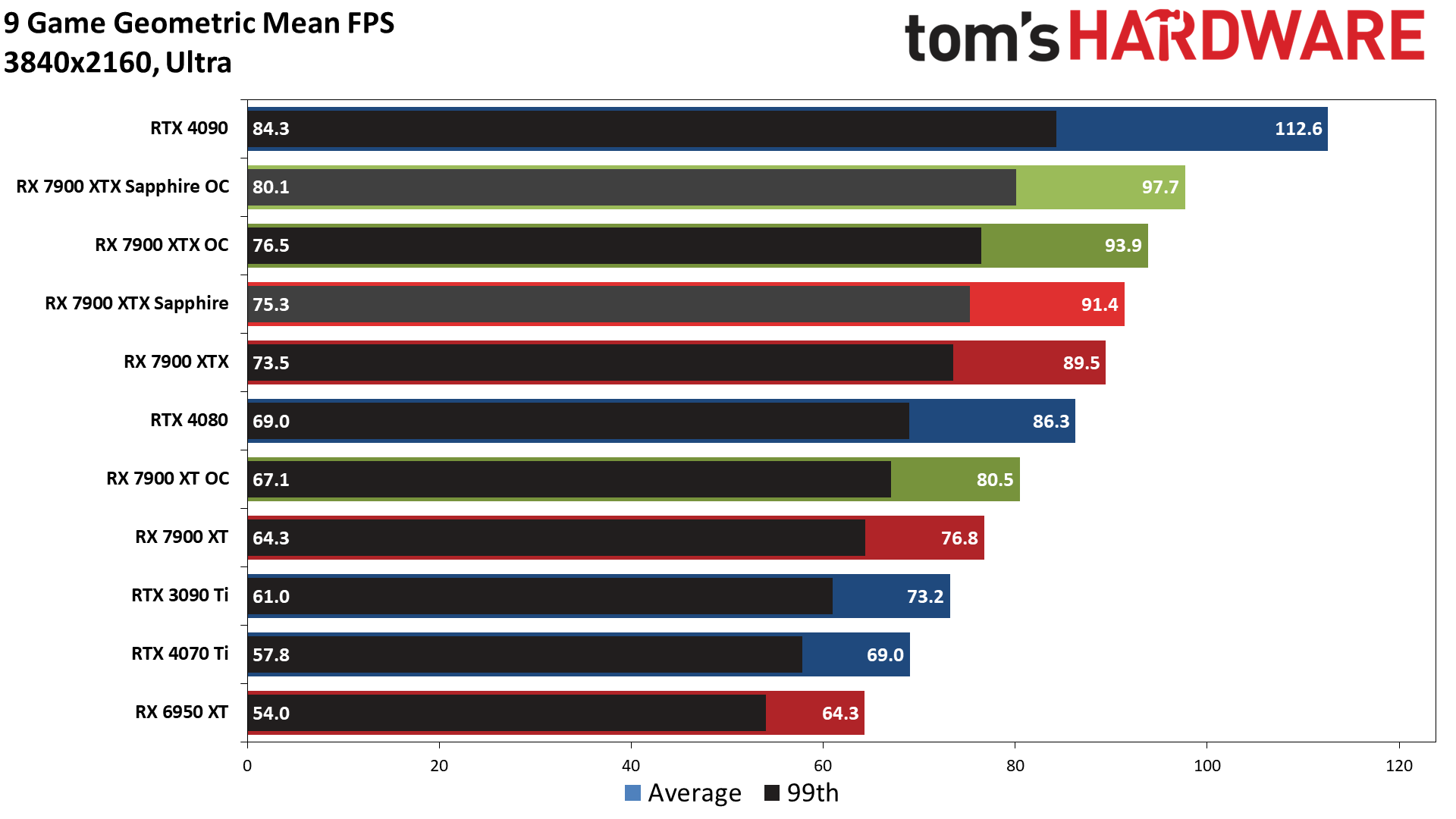
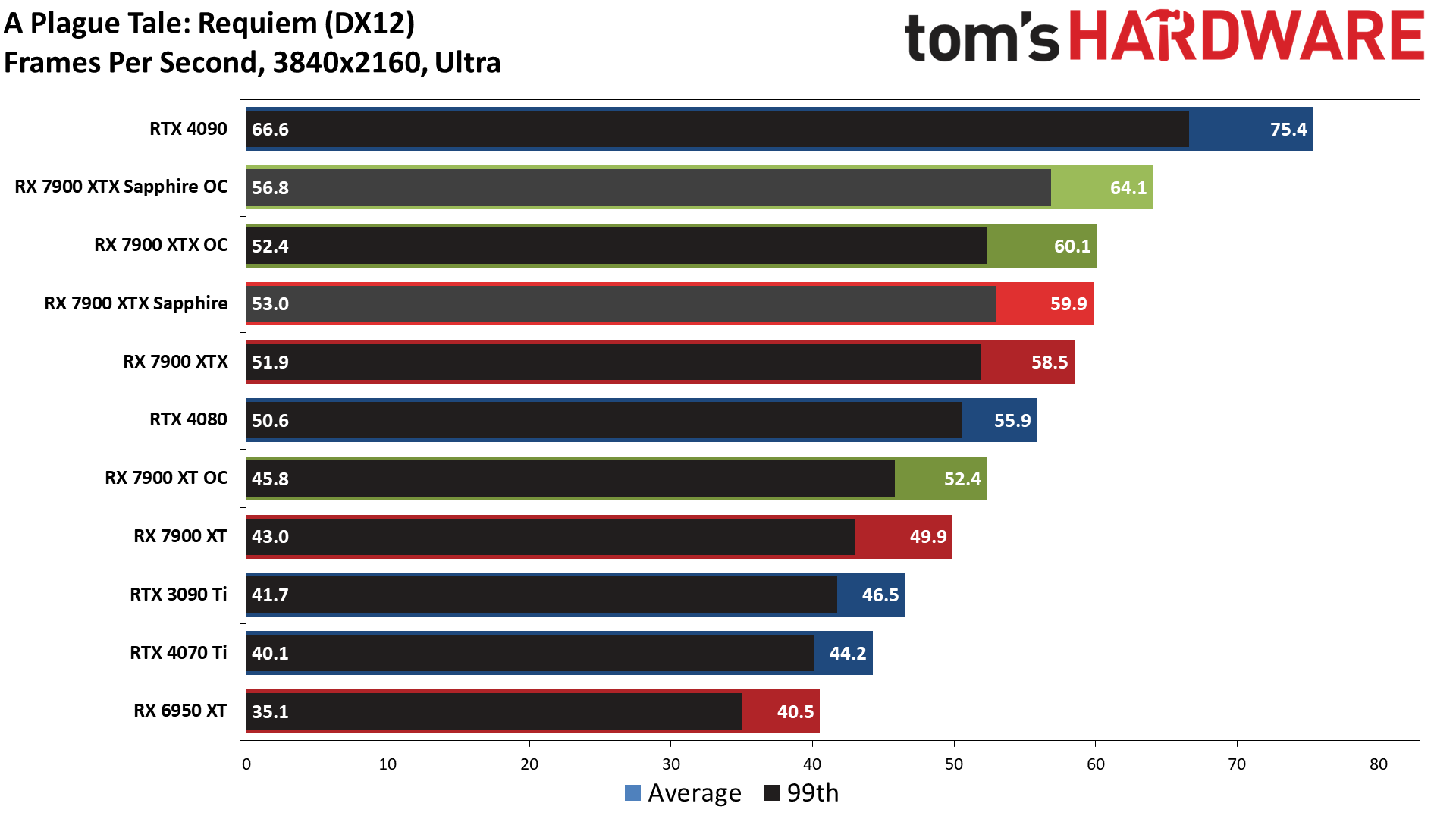
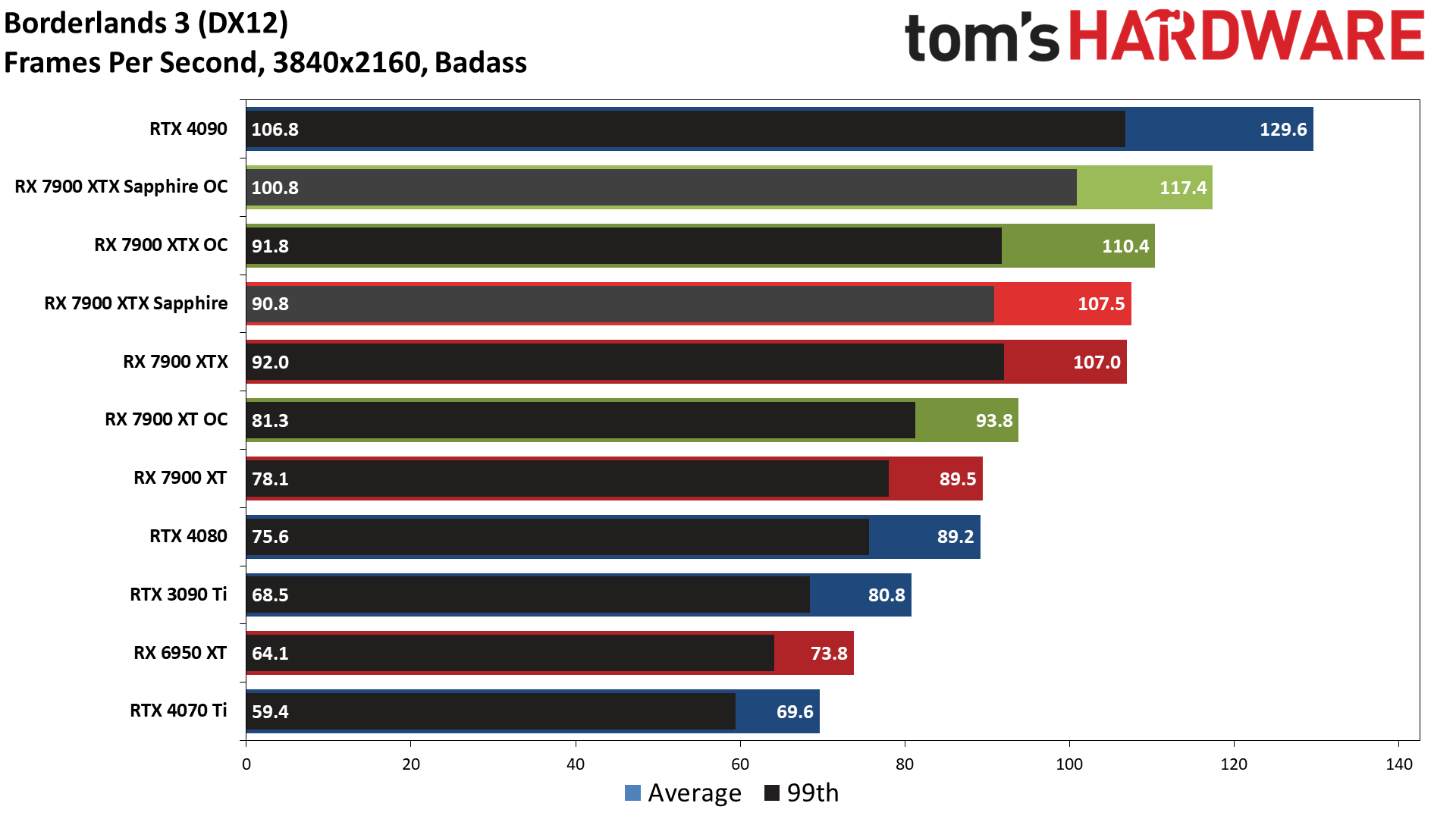
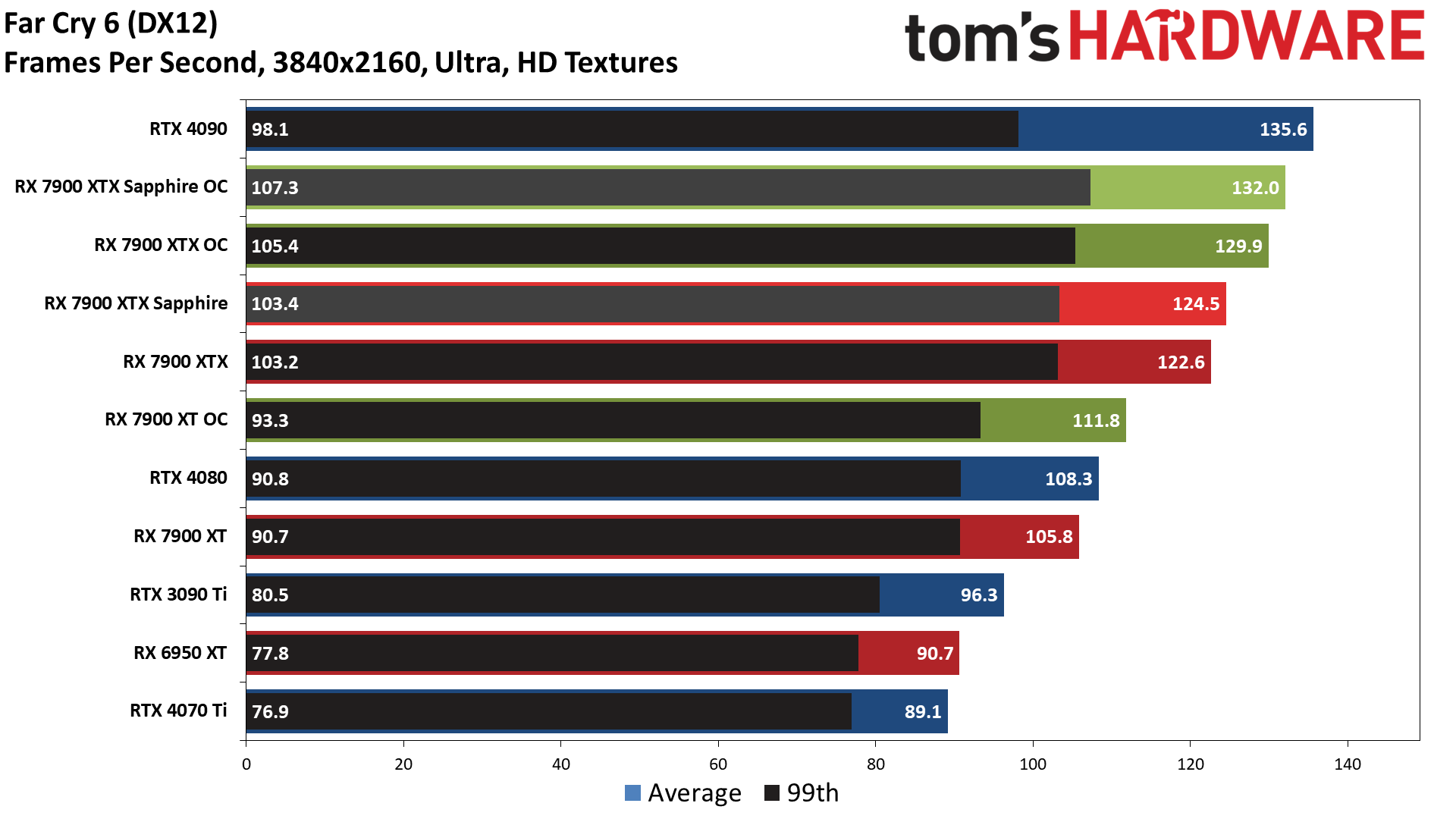
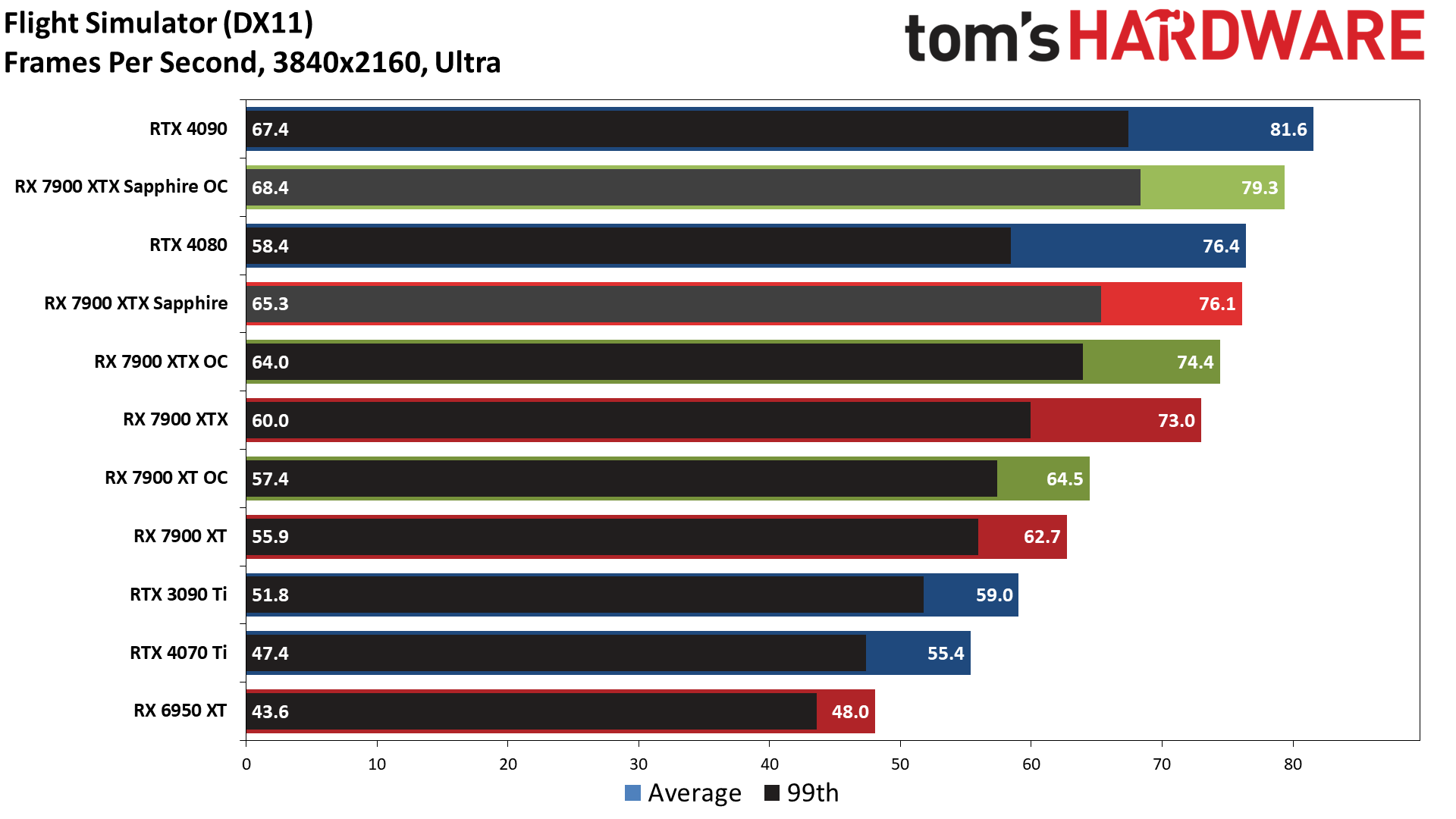

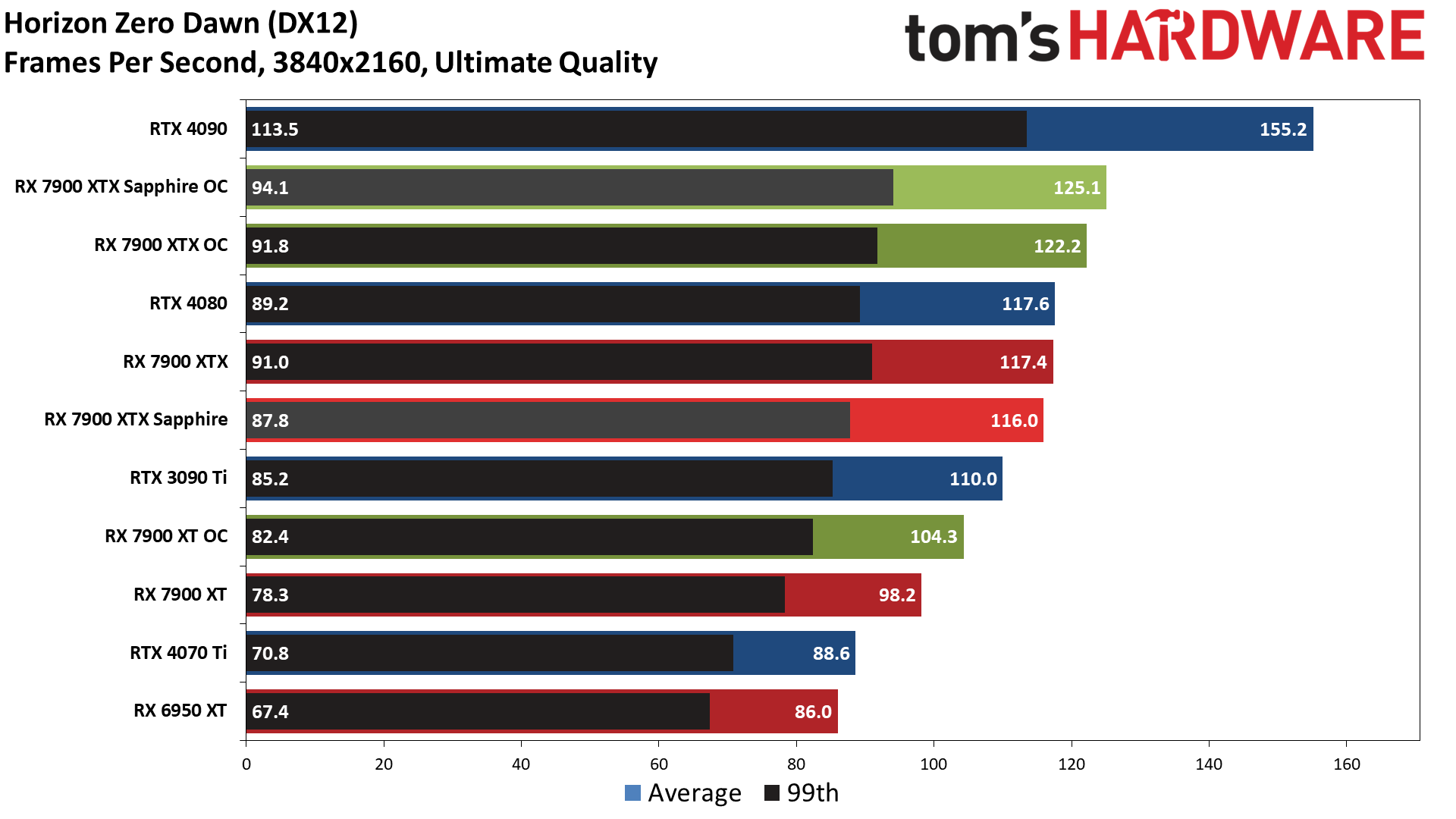
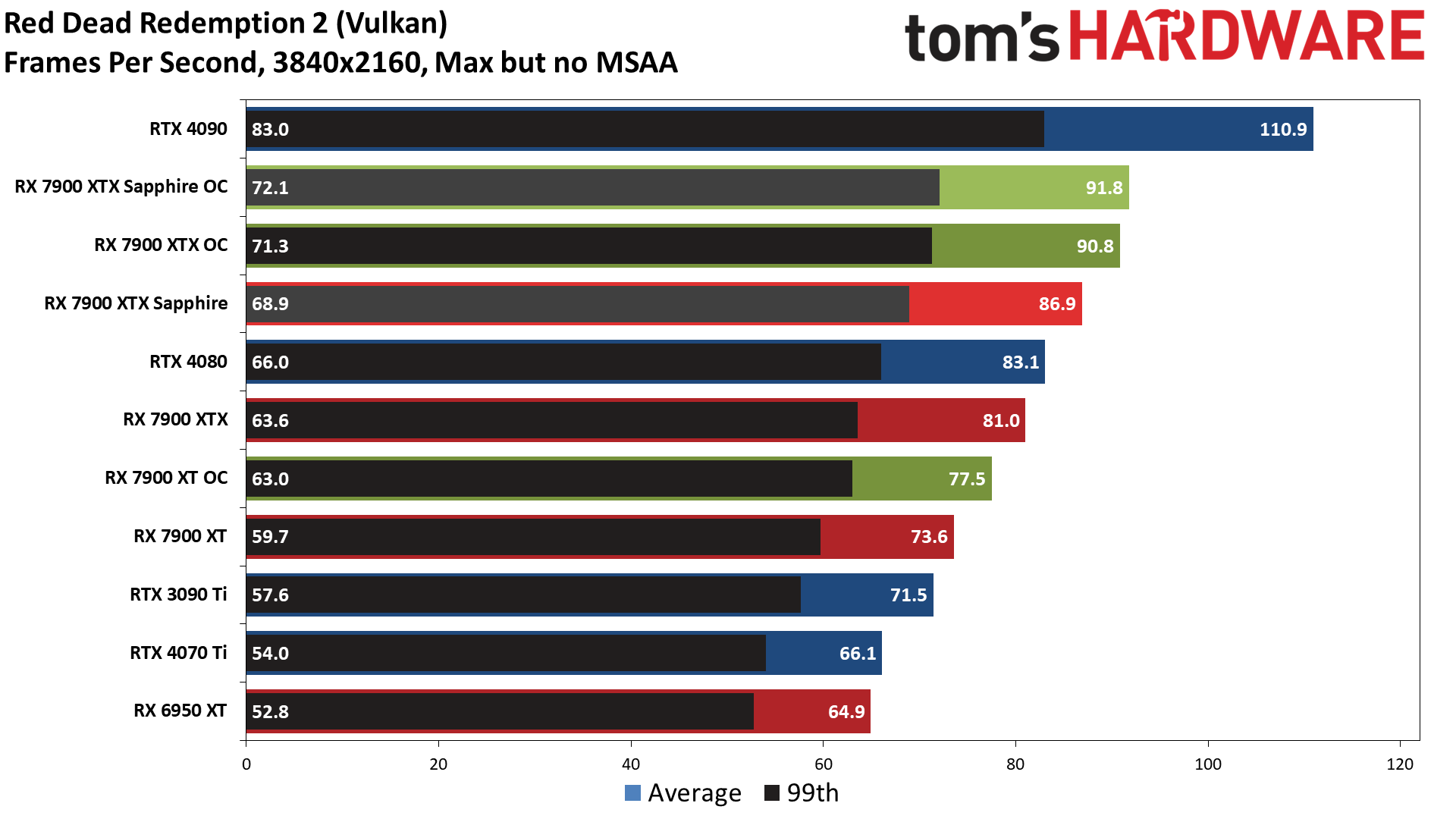
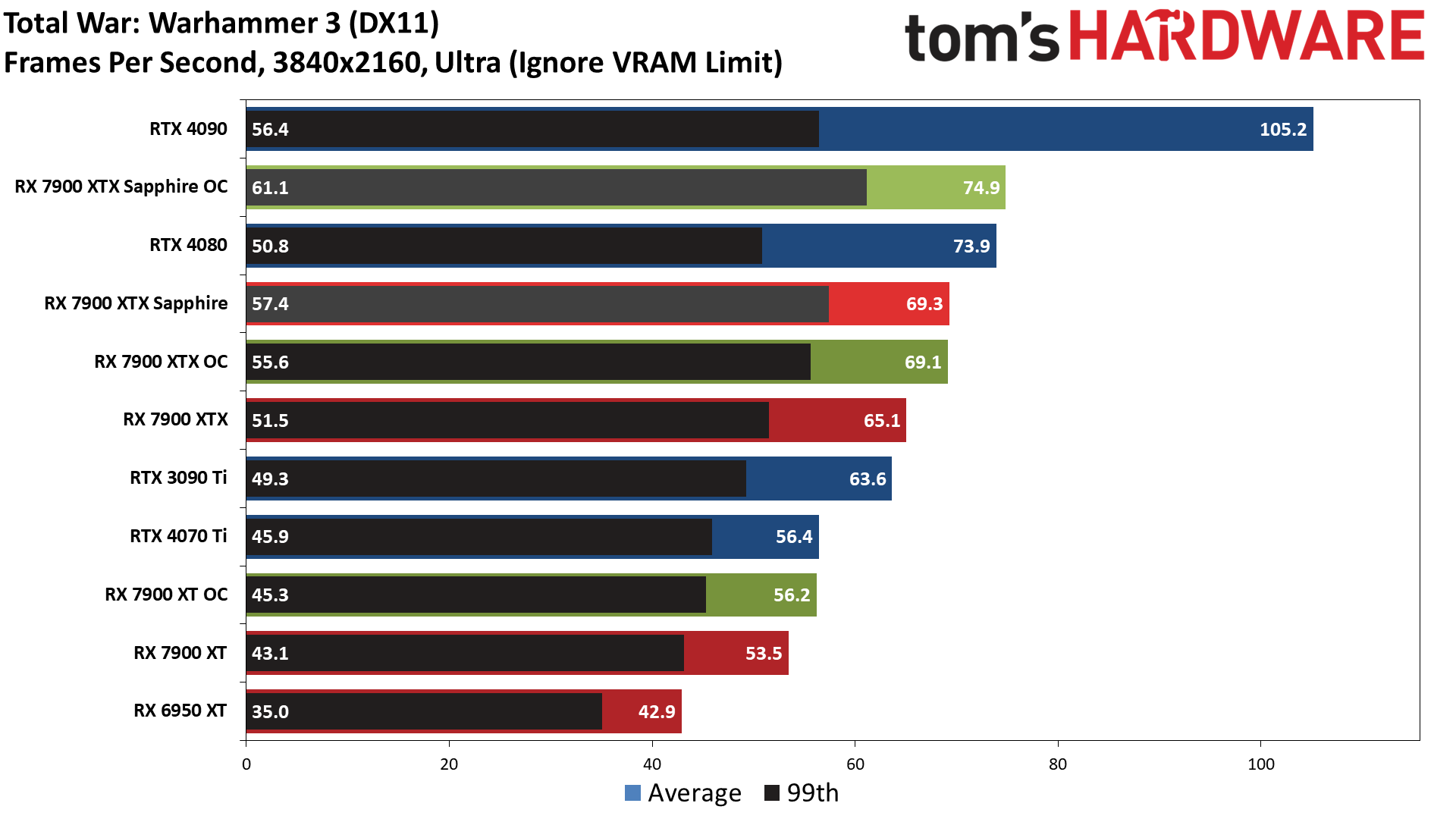
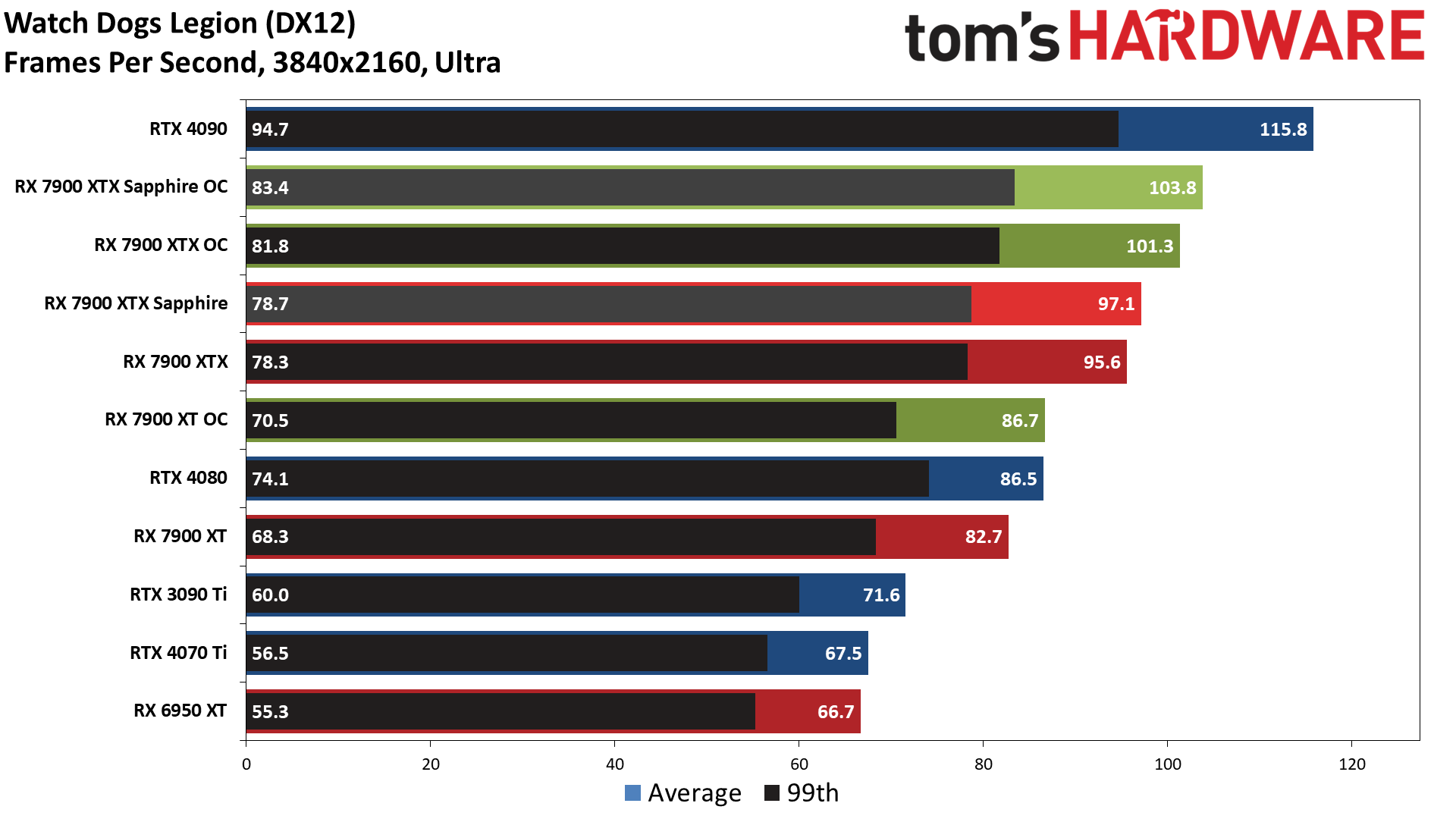
With the current seven fastest GPUs available, plus the Sapphire 7900 XTX, Sapphire's card ends up ranking second place overall in our rasterization benchmarks (not counting the manually overclocked cards). At the same time, it's barely any faster than the reference 7900 XTX — and we should note that our reference card sample doesn't seem to be one of those affected by the vapor chamber defect.
There's a bit of variability in our testing, and the Sapphire card was up to 7% faster than the reference model in Red Dead Redemption 2 and Total War: Warhammer 3, but it was also a few percent slower in Forza Horizon 5 and Horizon Zero Dawn. Bottom line was mostly a wash, with a 2.2% advantage across the nine tested games.
Overclocking is a different story. Where the gains from the factory overclock are almost negligible, the manual overclock improved performance by 7% overall. That's still not a massive change, but relative to the overclocked reference XTX card it was also a 4% gain. Those gains do come at the cost of power and efficiency of course, and we'd generally recommend sticking to the default clocks or even toying with underclocking or undervolting as a better option.
Meanwhile, looking at Nvidia, the Sapphire card leads the RTX 4080 by 6% overall, with larger wins in Borderlands 3, Far Cry 6, and Watch Dogs Legion. Nvidia's biggest win is in Total War: Warhammer 3 where it was 6% faster than the Sapphire card.
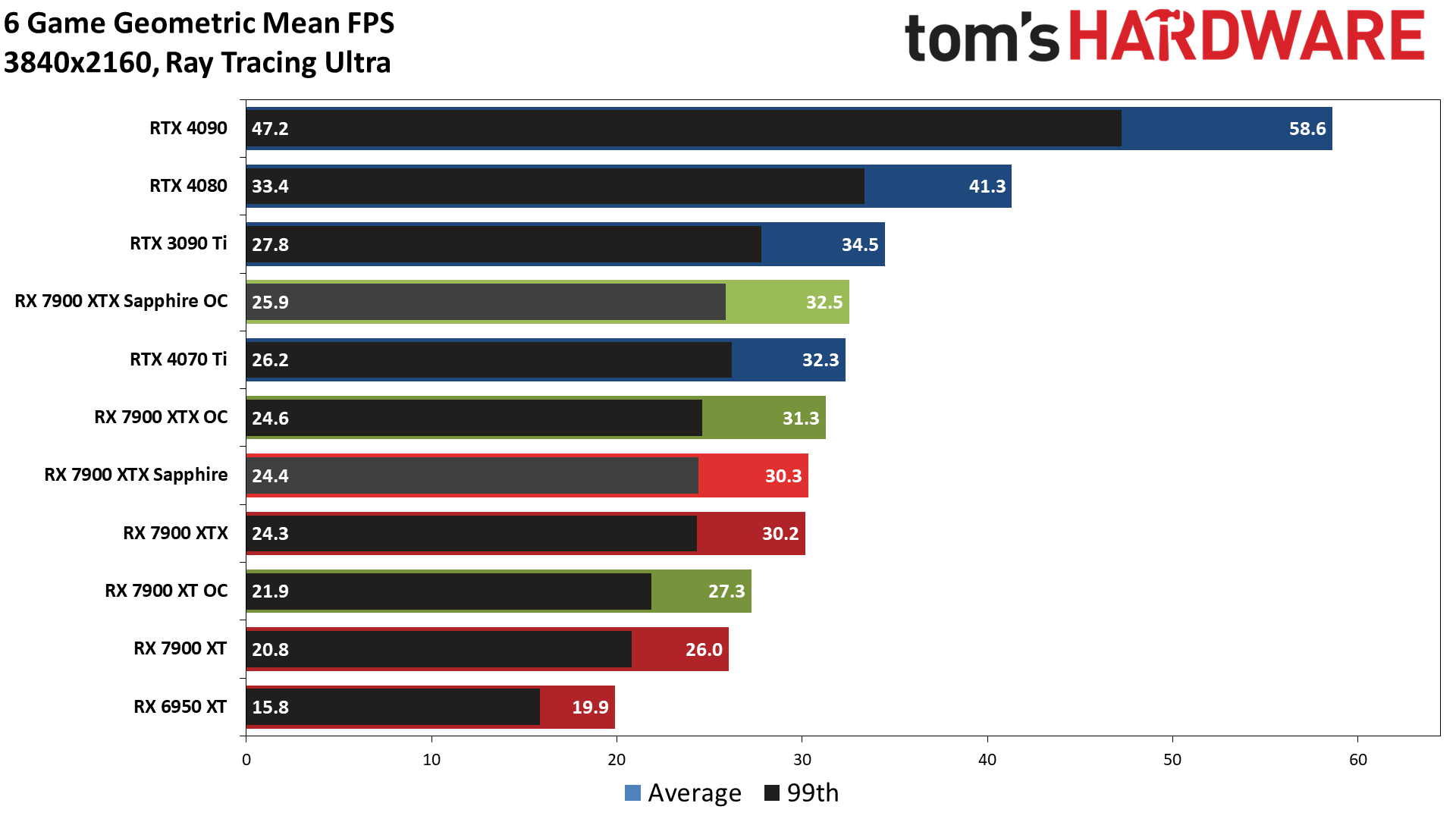
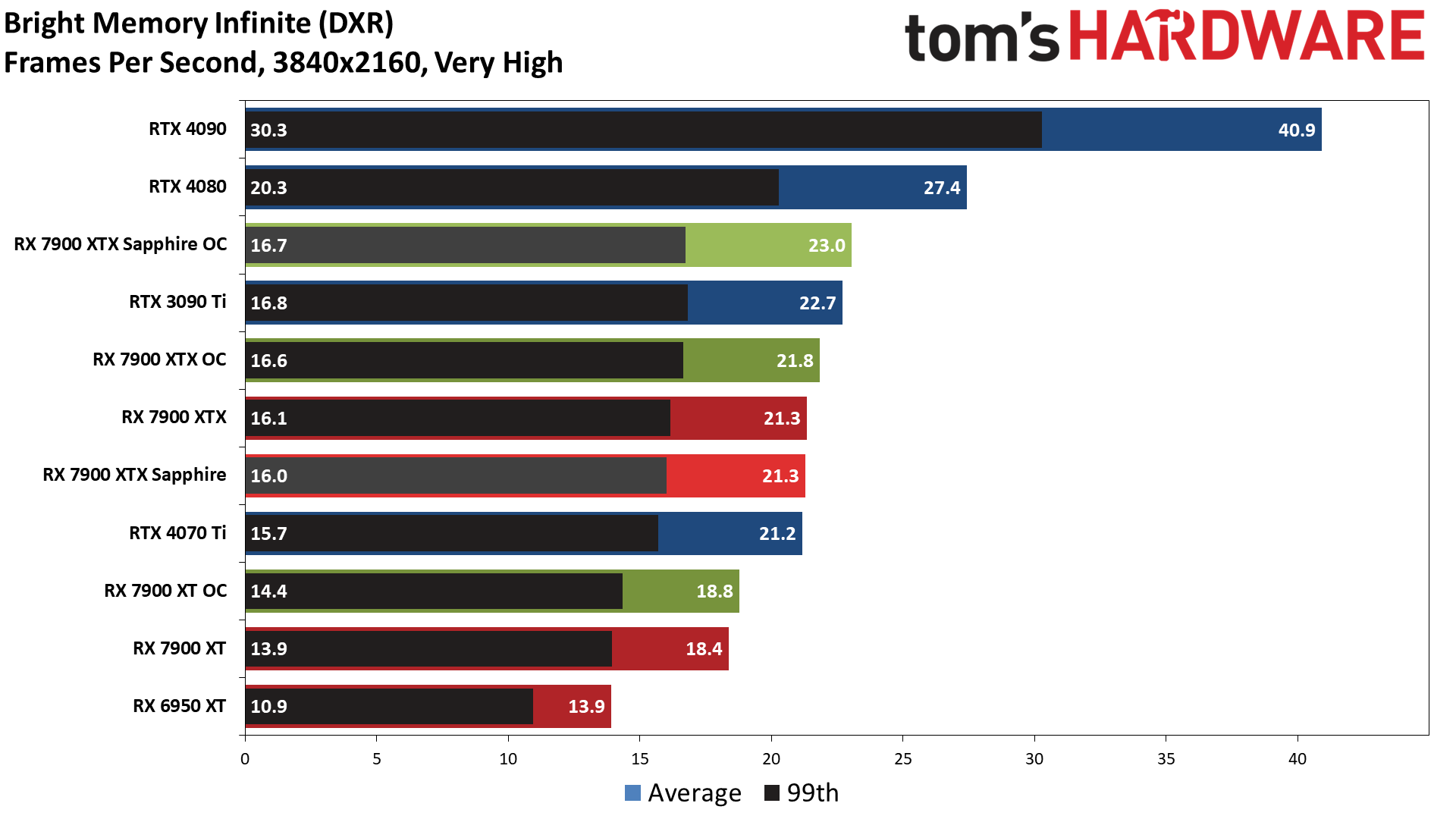

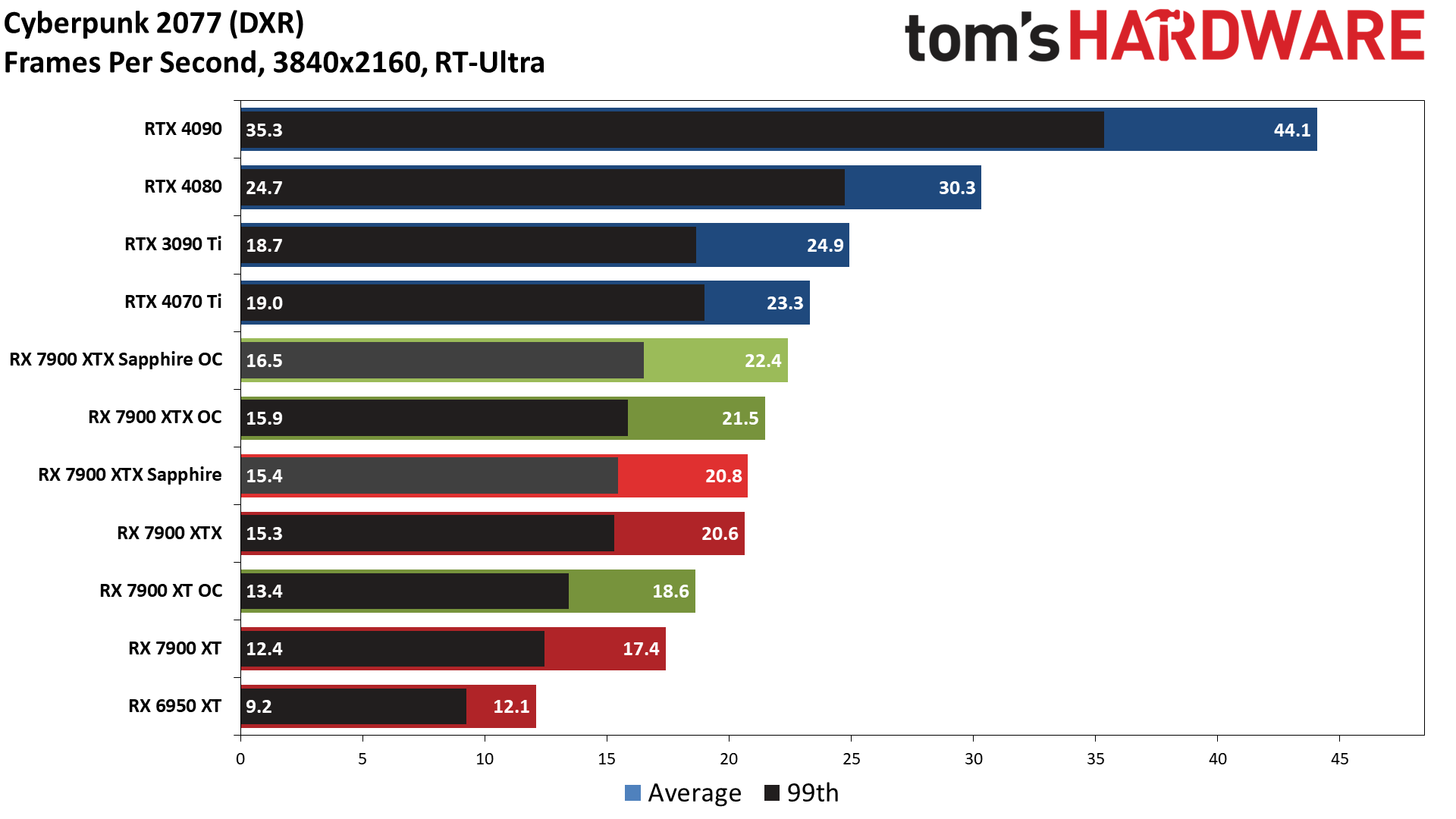
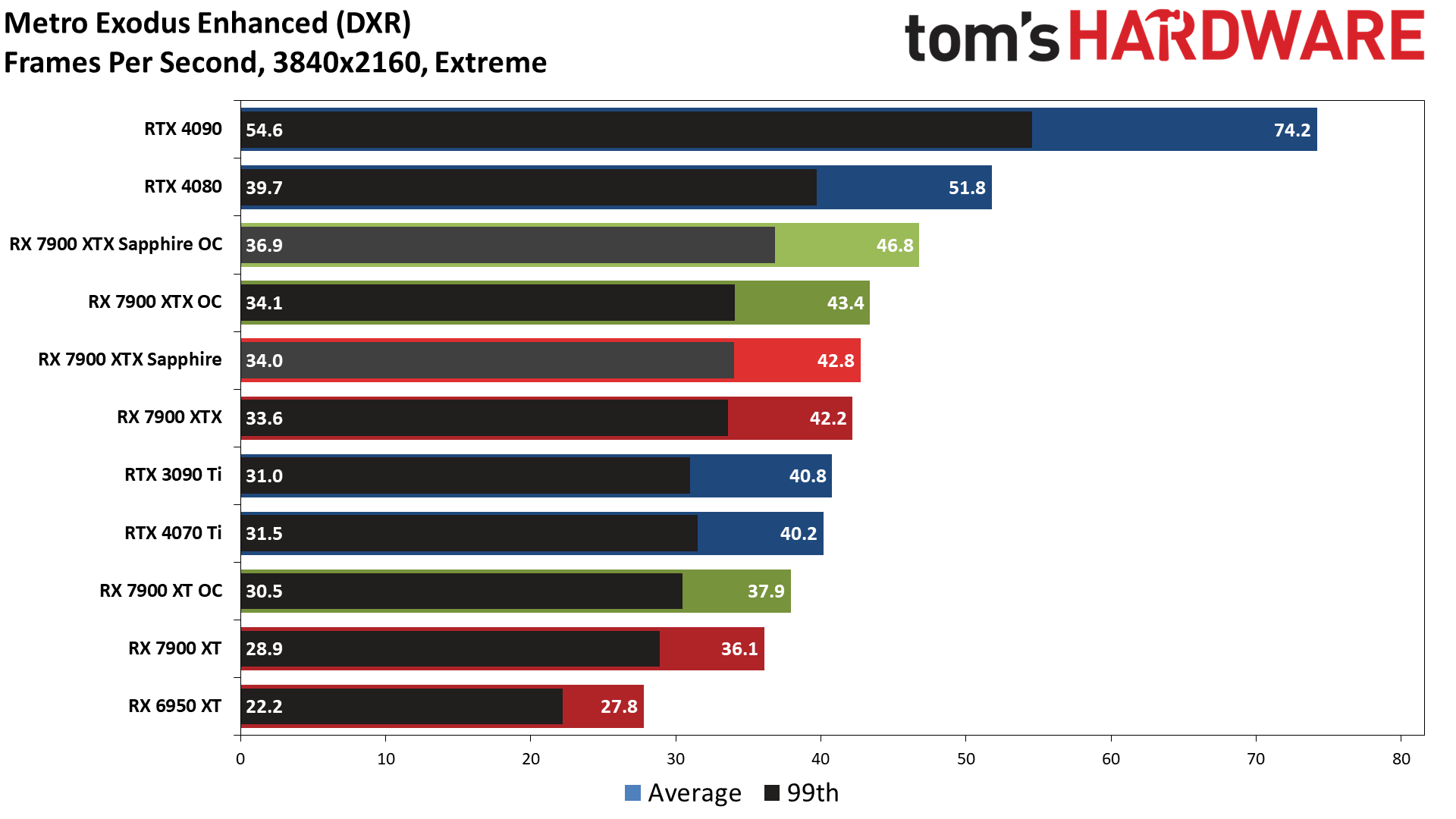
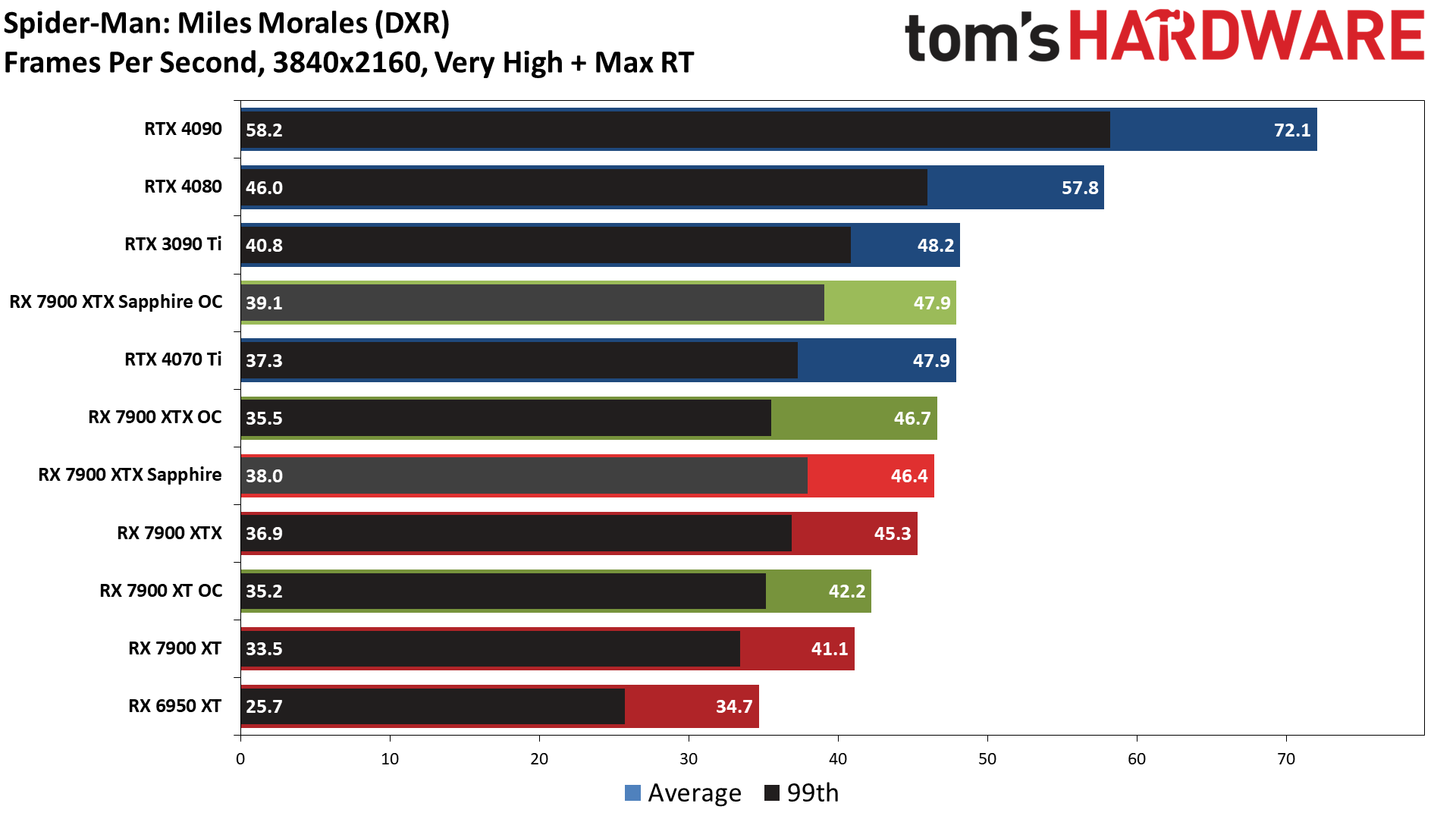
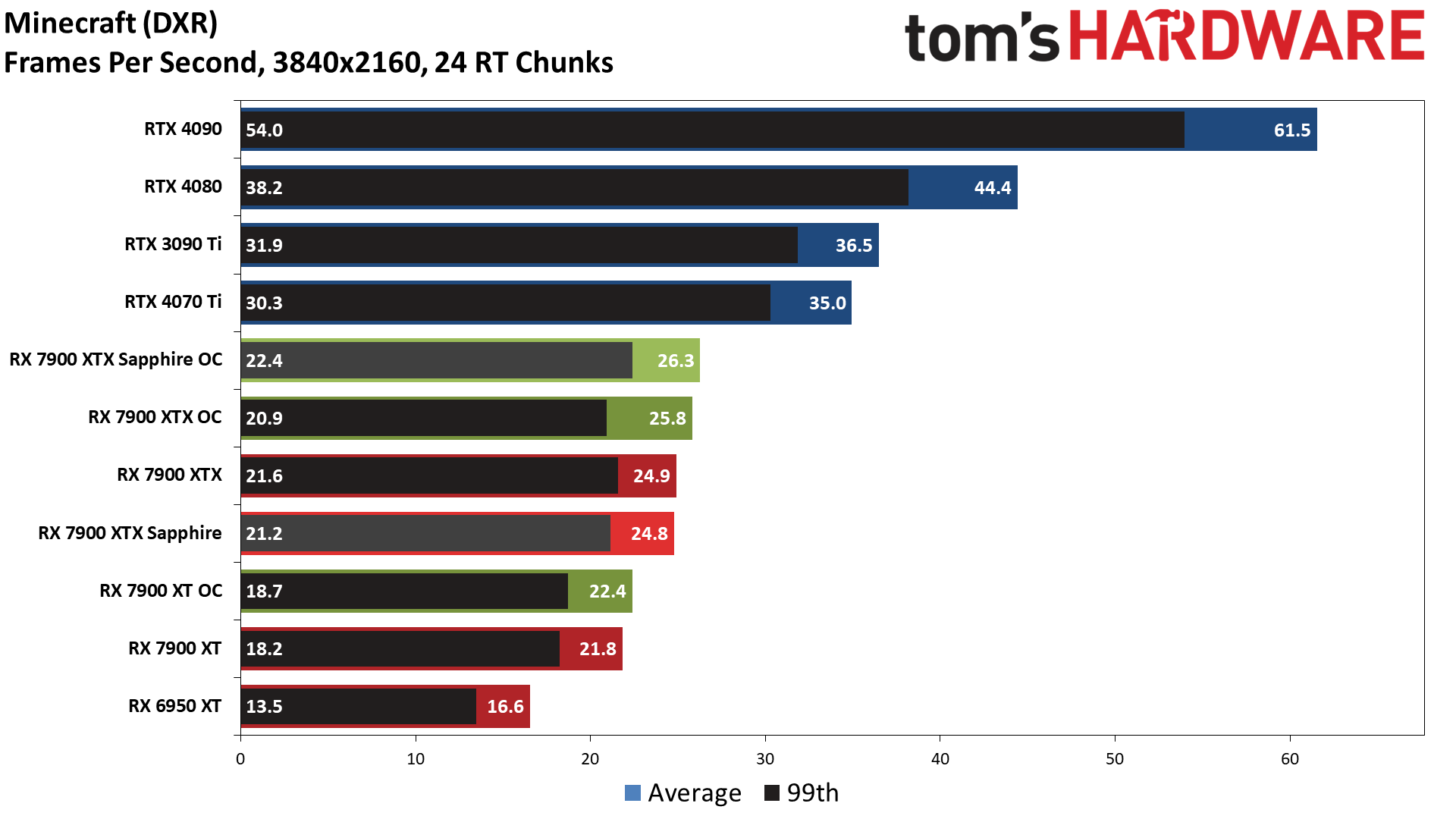
Ray tracing of course turns the tables, and the best Sapphire and AMD can do is fifth place, not counting the manually overclocked cards. The Sapphire card is also just 0.6% faster overall compared to the reference model, and the individual games show the two cards trading blows. The extra power and clocks ultimately don't show up in our factory stock testing.
Versus Nvidia, the Sapphire card is now 27% slower than the RTX 4080, and also trails the RTX 4070 Ti by 6%. It actually takes a slight lead over the 4070 in half of the games, but the deficits in Minecraft (-29%) and Cyberpunk 2077 (-11%) are quite a bit larger. And that's not accounting for DLSS, which most demanding DXR games support — though some also support FSR2, which at least partially closes the gap.
It's the usual story of AMD being a fine choice for rasterization, while Nvidia generally dominates in ray tracing performance. If you don't care at all about ray tracing, that's fine, and the visual difference in a lot of current games isn't even that big. Still, there are enough games with decent ray tracing support that we wouldn't completely write it off as "unnecessary."
Overclocking shows the same gains as in rasterization, incidentally: 7% faster compared to the default factory clocks, and 4% faster than the overclocked reference XTX card. The overclock is enough to just push past the (stock) Asus RTX 4070 Ti card in overall performance, though Minecraft still heavily favors the Nvidia GPU.
- MORE: Best Graphics Cards
- MORE: GPU Benchmarks and Hierarchy
- MORE: All Graphics Content
Get Tom's Hardware's best news and in-depth reviews, straight to your inbox.
Current page: Sapphire RX 7900 XTX Nitro+ Vapor-X: 4K Gaming Performance
Prev Page Sapphire RX 7900 XTX Overclocking and Test Setup Next Page Sapphire RX 7900 XTX Nitro+ Vapor-X: 1440p Gaming Performance
Jarred Walton is a senior editor at Tom's Hardware focusing on everything GPU. He has been working as a tech journalist since 2004, writing for AnandTech, Maximum PC, and PC Gamer. From the first S3 Virge '3D decelerators' to today's GPUs, Jarred keeps up with all the latest graphics trends and is the one to ask about game performance.
-
zecoeco This one narrows the gap even more with the RTX 4090.Reply
It tells me that AMD can offer an RTX 4090 beating card with a lower price tag, but for some reason they're not interested in the beyond $1000 market. -
-Fran- Thank God Sapphire is actually cheaper in the EU than any other AMD partner XDReply
Vis a vis, this card is the same price as PowerColor and Asus models.
Such a great performer, but I don't like this design xP
Regards. -
DavidLejdar Over here, Vapor-X sells for 1,499 Euro, and 7900 XTX for 1,269 Euro (including 19% VAT in both cases). And sure is quite a price difference for such a FPS difference. And then there is the RX 7900 XT, going for less than 1,000 Euro now.Reply
For the time being, I am fine with the RX 6700 XT (OC) though. At 1440p and ultra settings, I do get at least around 70 FPS in a number of games I tried so far.
A better GPU would increase the FPS, but it won't improve the built-in graphical assets of many a game, which are ever so often designed to run on consoles, where even the PS5 comes "only" with a peak performance of 10.3 TFlops. And a PC port usually doesn't redesign all of it, which means that a RX 6700 XT with 12.4 TFlops is not easily falling behind in that regard, especially when alongside a resonable CPU and a Gen4 SSD (which the PS5 and Xbox already have, for the increased transfer rate as well for the lower latency). -
cknobman IMO Ray Tracing today is like 4k gaming was back in the 1080ti generation.Reply
Its possible but requires too many compromises and should only be used in specific cases.
We need 1-2 more generations before ray tracing will be mainstream.
So right now I could care less about ray tracing, especially at anything above 1080p. -
Elusive Ruse Good stuff Jarred, thanks. Great card but at anything above $1000 it's criminal. Not like a thousand dollars is a fair price mind you.Reply -
redgarl So AMD AIBs card are costing more than reference cards and it is a con, but Nvidia ones are as worst but it is fine....Reply
You wonder why we can take you guys seriously?
OCJYDJXDRHwView: https://youtu.be/OCJYDJXDRHw -
redgarl You cannot find a 4090 at MSRP. They orbit around 1800$. And in all honesty, the 7900XTX AIB card can OC and be between 10-15% from a 4090.Reply -
redgarl The performance of this card is impressive, however the aesthetic is horrible. Even if the XFX model perform worst, it is still provide enough headroom for a similar OC, and at least, it is one of the best looking GPU available.Reply -
Sleepy_Hollowed Damn, if this was at MSRP I'd think about it, but it's a lot.Reply
A little issue I have is that I don't know why game engine companies don't have an option to turn on Ray Tracing on cut scenes only and then none during gameplay, I'd be down for that, not that there's much difference on how games look most games anyways. -
Exploding PSU Always liked Sapphire cards, and this one is no exception. I personally buy GPUs mostly on aesthetic (after considering pricing obviously), as performance-wise GPUs of the same series from different brands probably aren't really that different between each other, especially for a casual user like me. I mean, maybe a couple degrees difference in temperature or a single-digit percent in FPS, but honestly not enough for me to feel it.Reply
I liked the last year's model better (the Nitro Pure one), albeit I'm extremely impartial to white parts and random geometric shapes. The RGB look tasteful to me, albeit I personally wouldn't set it to rainbow colours and would settle to strictly static colour, kind of elegant.
Hey, that's just my opinion. From my short experience hanging around the forums I know any mention of RGB would invite open combat on the comments so... just to be on the safe side, the "you do you" disclaimer.
If I were in the market for a new GPU, I might consider picking this one up. But nah, I'm waiting for Yeston's turn.
I made fun of the box art on Sapphire's RX 6950 XT Nitro+ Pure, and I'm happy to say the blue and black artwork on the 7900 XTX is less ugly. Not that it really matters once you unpack the card.
Full transparency, the product packaging was part of the reason why I chose my current GPU. Yeah I know, doesn't make sense and all, but hey glad you mentioned the box... Cheers
